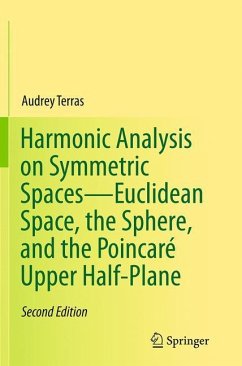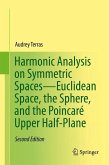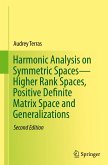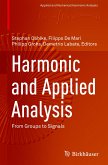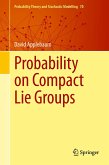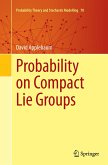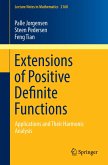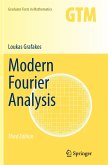This unique text is an introduction to harmonic analysis on the simplest symmetric spaces, namely Euclidean space, the sphere, and the Poincaré upper half plane. This book is intended for beginning graduate students in mathematics or researchers in physics or engineering. Written with an informal style, the book places an emphasis on motivation, concrete examples, history, and, above all, applications in mathematics, statistics, physics, and engineering.
Many corrections and updates have been incorporated in this new edition. Updates include discussions of P. Sarnak and others' work on quantum chaos, the work of T. Sunada, Marie-France Vignéras, Carolyn Gordon, and others on Mark Kac's question "Can you hear the shape of a drum?", A. Lubotzky, R. Phillips and P. Sarnak's examples of Ramanujan graphs, and, finally, the author's comparisons of continuous theory with the finite analogues.
Topics featured throughout the text include inversion formulas for Fourier transforms, central limit theorems, Poisson's summation formula and applications in crystallography and number theory, applications of spherical harmonic analysis to the hydrogen atom, the Radon transform, non-Euclidean geometry on the Poincaré upper half plane H or unit disc and applications to microwave engineering, fundamental domains in H for discrete groups , tessellations of H from such discrete group actions, automorphic forms, and the Selberg trace formula and its applications in spectral theory as well as number theory.
Many corrections and updates have been incorporated in this new edition. Updates include discussions of P. Sarnak and others' work on quantum chaos, the work of T. Sunada, Marie-France Vignéras, Carolyn Gordon, and others on Mark Kac's question "Can you hear the shape of a drum?", A. Lubotzky, R. Phillips and P. Sarnak's examples of Ramanujan graphs, and, finally, the author's comparisons of continuous theory with the finite analogues.
Topics featured throughout the text include inversion formulas for Fourier transforms, central limit theorems, Poisson's summation formula and applications in crystallography and number theory, applications of spherical harmonic analysis to the hydrogen atom, the Radon transform, non-Euclidean geometry on the Poincaré upper half plane H or unit disc and applications to microwave engineering, fundamental domains in H for discrete groups , tessellations of H from such discrete group actions, automorphic forms, and the Selberg trace formula and its applications in spectral theory as well as number theory.
From the book reviews:
"The present edition accommodates all the materials of the old one and maintains its style and spirit. ... It will acquaint that audience with this beautiful area and provide it with enough resources for further study. We hope this book will reinforce interest and excitement in the subject called harmonic analysis on symmetric spaces and, like its previous edition, it will be an important addition to individual collections and all the libraries, undergraduate, graduate and research." (Rudra P. Sarkar, Mathematical Reviews, November, 2014)
"An updated version of an established work of scholarship that has both stood the test of time, and remains very relevant and well-worth reading. The intended audience is very broad, and includes scientists outside of pure mathematics ... as well as mathematicians who wish to enter the indicated field and desire a very well-drawn road-map. ... And doing the exercises is a solid pedagogical experience that will inaugurate the novice as well as the interested 'visitor' into active areas of research." (Michael Berg, MAA Reviews, November, 2013)
"The present edition accommodates all the materials of the old one and maintains its style and spirit. ... It will acquaint that audience with this beautiful area and provide it with enough resources for further study. We hope this book will reinforce interest and excitement in the subject called harmonic analysis on symmetric spaces and, like its previous edition, it will be an important addition to individual collections and all the libraries, undergraduate, graduate and research." (Rudra P. Sarkar, Mathematical Reviews, November, 2014)
"An updated version of an established work of scholarship that has both stood the test of time, and remains very relevant and well-worth reading. The intended audience is very broad, and includes scientists outside of pure mathematics ... as well as mathematicians who wish to enter the indicated field and desire a very well-drawn road-map. ... And doing the exercises is a solid pedagogical experience that will inaugurate the novice as well as the interested 'visitor' into active areas of research." (Michael Berg, MAA Reviews, November, 2013)

